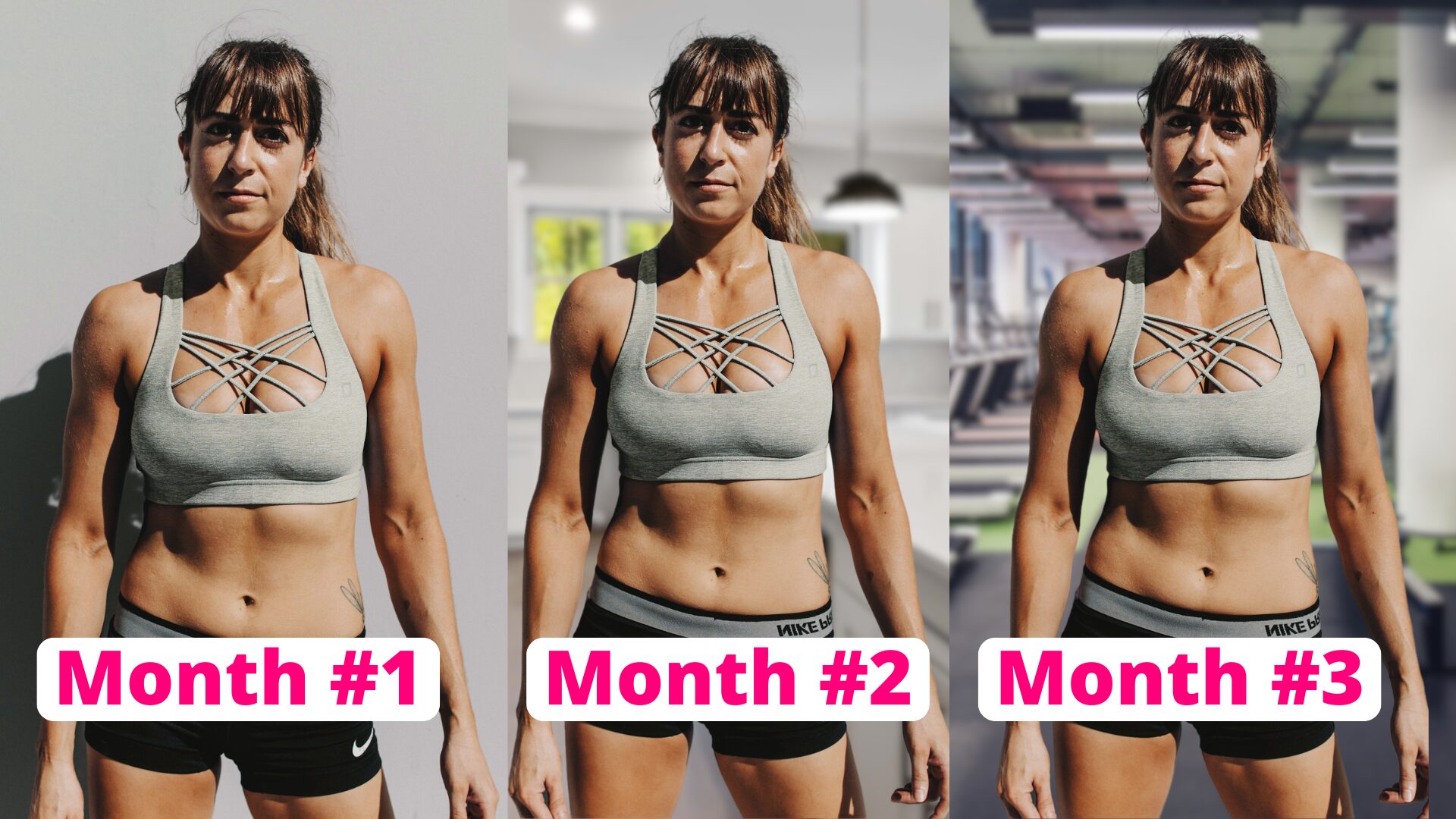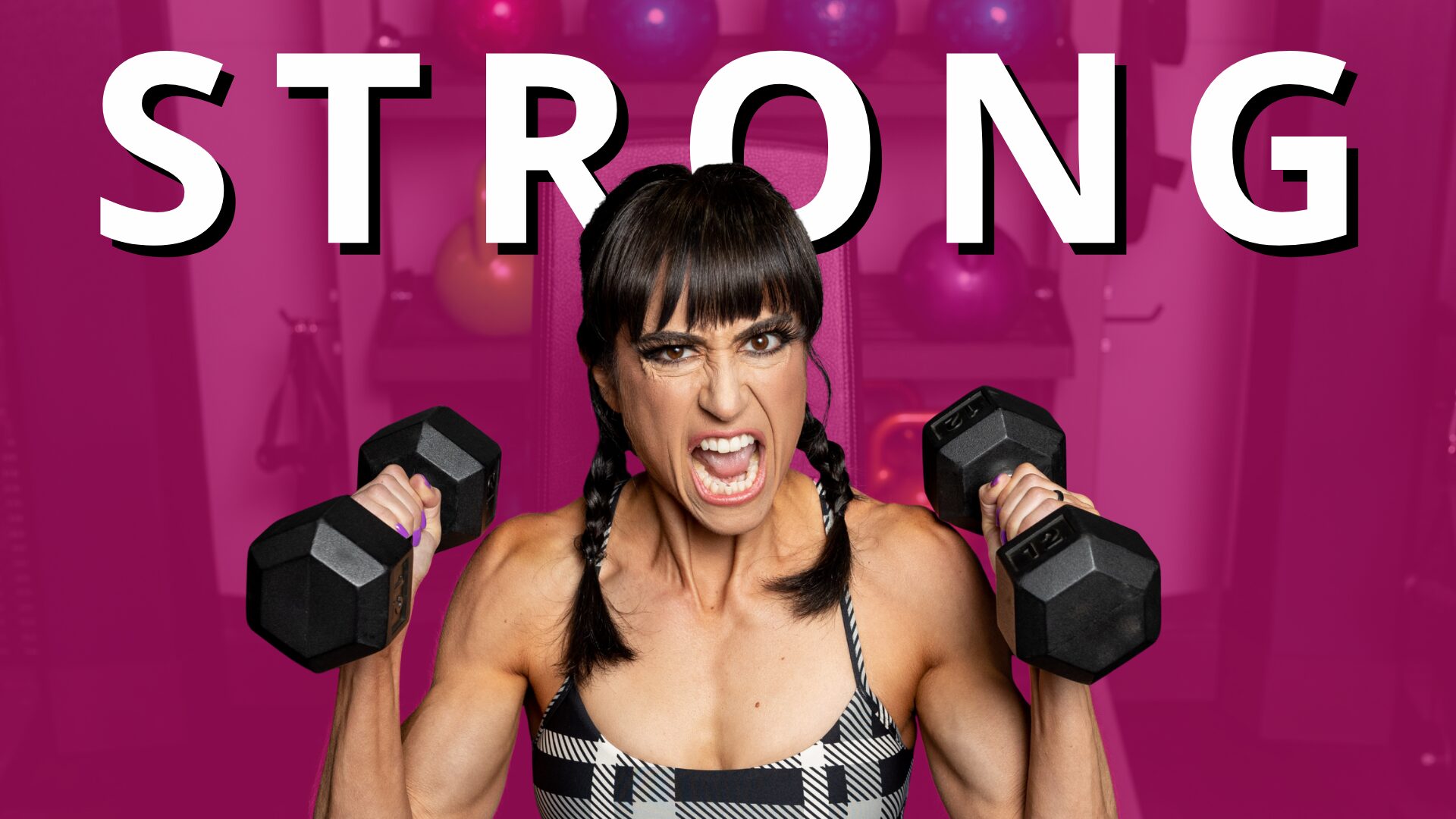You’re making great progress. Really sticking to the program and seeing great results.
Your pants are fitting looser.
Your workouts are feeling good.
You feel dialed in.
But then…your results start to slow.
And a few weeks go by where you feel like you aren’t making any progress.
Then the cravings start to hit.
You hadn’t been wanting those cookies, but now every time you pass the cabinet they call your name.
And your energy has taken a nose dive too.
You’re feeling kind of MEH in your workouts.
What’s going on!?
You didn’t change anything.
You’re still hitting your calories and your macros…So why aren’t things working!?
You’re tempted to freak out and slash your calories lower…
Start doing extra cardio…
Or even just throw up your hands in frustration and grab those cookies and head to the couch saying SCREW IT!
But don’t.
Let me explain what is going on because you aren’t the only one to hit this point.
It’s actually a NORMAL, and sucky, part of fat loss.
The key is just adapting and adjusting to overcome this plateau instead of falling back into the yo-yo dieting cycle.
And the answer is NOT to do more.
Instead you may need to slow down to speed up and actually take a BREAK.

But first, let me clarify what is going on….
Simply put, your body has adapted.
Our body wants to maintain balance so adapts to what we give it.
It is why we grow stronger in response to lifting.
But this is also why when we stay in an extended calorie deficit, our body adapts to it and we see metabolic changes.
In an attempt to stay balanced, and ensure all key functions are protected, our body conserves energy for the things most needed.
Think about it like light dimmers for the lights around your house.
To conserve energy, you dim or turn off lights.
You can turn them back on when there is more energy or light in that room is needed, but for rooms you aren’t in, dimming or turning them off makes sense.
Your body does the same thing in response to an extended deficit.
It turns off or slows down processes and functions not needed.
And if we even have too little energy coming in, we may see lights start to dim in rooms we’re in – we may start to see hormonal imbalances popping up and low energy and cravings hit.
This is when we know it is time to make a shift.
Because if we don’t, we’re going to find ourselves struggling in the dark.
So if you’re finding your results have plateaued, and note, a true plateau is absolutely NO change for at least 3-4 weeks…
4 weeks especially if you’re a woman still having your normal cycles…
Then you may want to consider that full diet break.
This diet break can help return balance to our body and make sure we have the energy for all processes needed.
It can reverse metabolic adaptations and retrain our body to eat more.
And while we may see a slight jump on the scale to start, it often can even lead to body recomp happening, because we can gain muscle more easily in this phase.
So if your results have stalled, let’s break down how you can use a diet break to your advantage.
I know this seems counter to everything we’ve always learned about losing weight…
I’m telling you that you’re not yet at your goal and you need to eat more NOT less…
But this break is mentally and physically key for long-term consistency and metabolic health.
It allows you to go back into that deficit and see progress.
And part of why it works is the slight shift to building muscle, which helps you burn more calories even at rest.
This will also help you look leaner as you lose.
So if you’ve ever thought, “I lose weight but don’t look as defined as I want.”
A diet break may have been the missing piece in your journey in the past.
Now, what is a diet break exactly and how do you do it?
A diet break is exactly what it sounds like…Well almost exactly what it sounds like.
It is NOT a week long “eat anything you want” bender.
You still want to fuel to feel your most fabulous, although I do recommend potentially working in more foods you haven’t while in your deficit.
It is meant to be that mental and physical reset.
It is especially helpful when you’ve hit that plateau trying to lose those last few pounds or even when you have more than 20lbs to lose but have been in a deficit for 4-6 months already.
This diet break is a 7-14 day period of eating at maintenance calories with more moderate macro ratios or even a minimalist macros approach.
It’s not a cheat day or refeed.
It is that extended stretch to reset and rebuild.
You will want to keep your training the same or even focus slightly more on lifting.
Just because you’re eating more doesn’t mean you should train more or increase your cardio.
Now how much you increase your calories will depend on the size of your deficit.
If you know your maintenance from before, you can bump right to that.
Otherwise a good general goal is to increase by 500.
With a diet break, I recommend going all in with the increase too.
Don’t slowly increase, just start the break with 500 calories more.
Yes, this will lead to a bigger jump on the scale as you won’t be depleted and will see water weight and glycogen storage happen, but it will allow you to maximize the impact of the 1-2 weeks.
Now if mentally you know this just isn’t doable, consider a 100-200 calorie increase over 3 weeks as your first diet break.
For macro ratios, I recommend more of an even thirds split.
Or if you want to mentally get more of a break from tracking, just trying to hit 30% protein while letting carbs and fats fall wherever they do.
While often I recommend only changing macros or calories but not both together, for this break, you may bump and switch ratios at the same time.
Again, if you know mentally you’ll be more impacted by the scale jumping up to start, you may try a diet break with the slow calorie increase and even keeping your CURRENT macro breakdown.
But the more you truly embrace this full break, the more you’ll see the long-term impact and benefit.
Think of it like taking that rest-stop on your roadtrip so you don’t fall asleep at the wheel and crash your car into a ditch.
If you try to willpower your way through your fat loss plateau, you could end up just giving up and self-sabotaging and losing all your progress anyway because you were afraid to take the break proactively!
But I do know it’s a challenge to do less. We don’t feel in control.
I also know it can be hard to see the opposite of what you want to have happen occur.
When you want to lose weight and are working hard, it’s hard to see the scale go up.
But this increase isn’t bad.
That’s why I want to give you a few warnings so you can be prepared.
Often the more we oversell the negative, run through all the potential struggles, the easier it is to embrace them when they happen and keep going.
So some warnings…
If you’re guessing the first one is the scale will increase, you’re right.
But this glycogen storage and water weight is what helps with the rest and even helps you push in your training to optimize those muscle gains during this time.
Your body needs to know it has the fuel to repair and even “turn back on” so to speak some of those other functions and processes.
Again those lights are no longer needing to be dimmed.
But part of this gain is that your body sees this increase as a surplus to start.
It’s why not quitting after a couple of days but actually embracing the full 1-2 weeks is key.
This retrains your body to truly function off the increase and build.
The other warning is, watch that those cravings don’t sabotage you with the flexibility that will come with more calories.
It is tempting to go a bit…crazy…with the increase. It is easy for the freedom to become us excusing more deviations and overeating further.
Just note you may see hunger cues change but to stick with your numbers and continue to track.
What gets measured gets managed and we still want that data!
So track and plan in foods you love but remember you want to find that balance and not just fall back into old habits.
Now…one final thing I want to cover…
What happens AFTER the break?
Depending on your goals, especially if you are looking to see more recomp, you may realize, your break isn’t really a break.
You may see inches being lost and even the scale drop lower after an initial increase.
This can happen with the whoosh effect that occurs where fat cells release stored water from lower carb ratios or a bigger deficit.
This can also happen because of gaining muscle and boosting our metabolism.
Your maintenance calories may not really be a surplus or maintenance.
You may even find by the end of the diet break you’re losing and need to eat more.
But you also might find that after the initial gain you leveled off or lost to go back to your previous break weight.
If this is the case, you may decide, especially if you have 20 or more pounds to lose, to go back into that deficit.
Consider starting with a small decrease of just 100-200 off your maintenance even though you initially bumped 500.
The more you can use the retraining you’ve done those last 7-14 days the better.
So instead of dropping back down 500 calories, try the small deficit.
It can help you maintain lean muscle while losing fat.
Of course, there is always an “it depends” to what we do next.
There is opportunity in so many options as each journey is unique.
But you can also follow this up with a mini cut, especially if you are working toward recomp for a specific event.
For more on all these phases of fat loss and how they can work together, check out the video I’ve linked to in the description.
Remember though, what we do to reach a goal will change.
We don’t go at one speed or do one thing for our entire journey.
So if you’ve hit that plateau, it isn’t a roadblock to turn back at. It’s a stop sign where you can determine which way to go.
And a diet break, slowing down to speed up, may be just what you need!
Dial in your diet to match your workouts and build your leanest, strongest body ever with my Metabolic Shred…
–> LEARN MORE



0 Comments